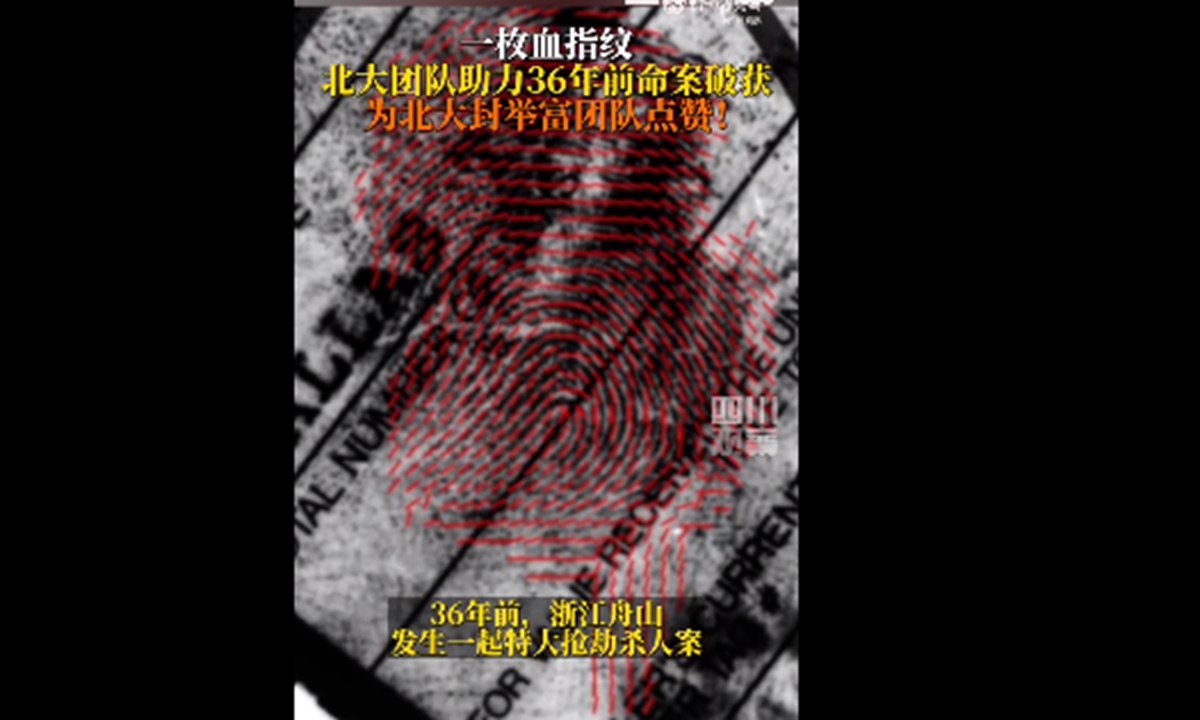
A team led by Feng Jufu from Peking University spent over 20 years developing an artificial intelligence fingerprint recognition engine, which has helped crack a 36-year-old murder case. Photo: web
A bloody fingerprint is one of the key clues left at the scene of a robbery and murder case in Zhoushan, East China's Zhejiang Province, 36 years ago. Recently, the case went to trial and the breakthrough came from the identification of a single bloody fingerprint.
The team led by Feng Jufu from the School of Artificial Intelligence at Peking University spent over 20 years developing an artificial intelligence fingerprint recognition engine, which has helped crack this 36-year-old murder case.
It is understood that since its application, this technology has assisted the police in successfully solving thousands of cases, achieving a leap in the development of fingerprint recognition technology in China's open environment. The core of fingerprint recognition is to find and mark the characteristic points of each fingerprint, converting them into a series of binary numbers for comparison with existing fingerprint data.
In 2016, the "evolved" artificial intelligence fingerprint recognition algorithm was introduced, with an accuracy rate of over 90 percent. This internationally pioneering algorithm is now able to match or even surpass professional and skilled fingerprint examiners, achieving automatic feature extraction and rapid comparison. The resolution of long-standing historical murder cases has brought deep comfort to the victims and their families who have longed for the capture of the real culprits.


